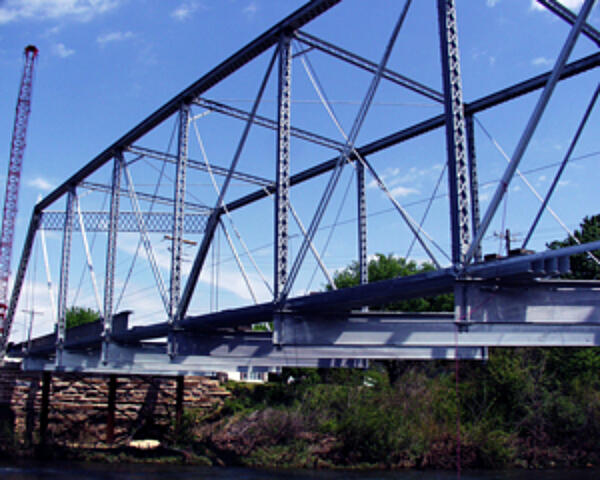Current Bridge Market
Whether arching a rushing river or connecting interstate and highway systems, bridges are an everyday part of our nations transportation system. These critical elements knit together communities across the country, providing safe travel of goods and people. Constructing new bridges is a complex, expensive, and time-consuming endeavor; and thus, it is paramount to design effective, sustainable bridges for today as well as future generations.
In 2017, the American Society of Civil Engineers (ASCE) rated the US bridge infrastructure a C+, and noted the average bridge is 43 years old. Considering most of these structures were built with a lifespan of 50 years, and 40% have already reached or exceeded that lifespan, there is significant need to upgrade our bridge infrastructure. More than 188 million trips are taken every day across the nation’s structurally deficient bridges.
As you can imagine, there has been significant evolution in the technology, design innovation, and materials as well as massive change in the type and volume of vehicles using our bridges since their initial construction. Retrofitting existing structures is both costly and labor intensive – more like putting a band-aid on a bullet wound. When new and replacement bridges are built, the Federal Highway Administration (FHWA), state Departments of Transportation (DOTs), and local government are looking to the future and trying to build bridges with longer lifespans and to accommodate future traffic.
Planning for the Future: HDG Steel Bridges

One of the big initiatives in planning for the future is to focus on building 100-year bridges. This is not only to learn from the past mistakes, but also a nod to future generations and sustainable development. If environmentally-friendly, economically-feasible bridges are constructed today, future generations will inherit a better infrastructure system than current conditions. To build sustainable bridges, it is imperative to evaluate the construction materials used to ensure they can not only meet the long design life without significant deterioration, but also without significant cost.
Hot-dip galvanized steel has been used in bridge designs for generations. The economical, long-lasting protection system affords bridge designers the life and minimal maintenance they desire. As with any building material, there are certain best practices for design and service environments that ensure the highest quality, longest lasting galvanized steel bridges. Understanding both the benefits and limitations of galvanized steel will assist bridge engineers in evaluating if hot-dip galvanizing is a solution for their bridge project.
The Short Span Steel Bridge Alliance (SSSBA) is a group of bridge and buried soil structure industry leaders who have joined together to provide educational information on the design and construction of short span steel bridges in installations up to 140 feet in length. The Short Span Steel Bridge Alliance is made up of partners from various sectors of the industry including universities, trade organizations, producers, coaters, fabricators, owners, contractors, fasteners, service centers, and design firms.
The SSSBA developed the eSPAN140.com design tool to help county engineers and bridge owners compare steel to concrete bridges in the short span market. There is a misperception that short span steel bridges are not economical and difficult to design. The eSPAN140.com site will provide a county engineer with a simple, short span steel bridge to put on the table. It provides a Solutions Book with fabricators and manufacturers who can quote the cost of the bridge and produce it according to the selected specifications. The tool is designed to be easy to use, and does not require the county engineer to be a bridge engineer to understand it. More information about SSSBA and their activities is available at shortspansteelbridges.org.
HDG Bridge Case Study
City of Utuado Bridges (After Hurricane Maria): Utuado, Puerto Rico, 2018

In September of 2017, Hurricane Maria, a category 5 storm, brought devastation to the island of Puerto Rico. Maria left the country without power and more than 1,100 lives were lost to this catastrophic event. Puerto Ricans were left struggling to access basic needs like fresh water, food, and shelter.
Back in Ohio, U.S. Bridge set to work to bring relief to the communities throughout the island by designing and installing modular Liberty bridges. To meet the urgent needs as winter was setting in and to ensure the bridges could survive the tropical climate, hot-dip galvanizing was chosen to protect the structures.
Employees of U.S. Bridge and V&S Columbus Galvanizing took a sense of pride in this project, even working through some of their own holidays (Thanksgiving and Christmas) to aid the families of Puerto Rico. In just six weeks the first of the hot-dip galvanized bridges were manufactured and installed, within six months, all of the bridges were completed reconnecting five communities across the island.
More than 850 metric tons of hot-dip galvanized US steel was used to create more than 950 feet of bridges, including the embedments, stringers, cross members, and all major structural support elements. The flooring was also galvanized and coated with a special grit surface. As the bridge was galvanized many miles away from where it would be erected, careful packaging and precaution was taken to guard against wet storage stain during transit.
Barges were loaded when the contractor had arranged them to depart, and correct packaging was critical so when they arrived the contractor would receive the correct bridge pieces, in the correct location, and in the order necessary for the contractor and laborers to install. Not only was hot-dip galvanizing production easier to accomplish in the heart of winter, it also meant no need for touch-up when the steel arrived. The end result was aesthetically pleasing, functional hot-dip galvanized bridges which will keep these communities connected for generations to come.